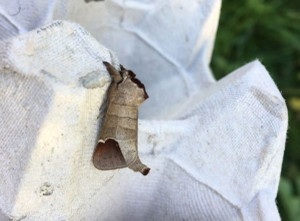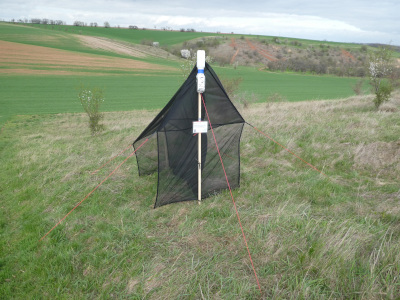Task 4: Testing complementary and additional modules
Leads: UFZ, with University of Reading & De Vlinderstichting
Contributors: UFZ (including Krefeld), BCE (plus partners across EU), Naturalis, Lund University, OK, Aegean, Senckenberg and EU-PoMS Expert Group



Overall aim
The MVS comprises a set of well-established standardised methods which can be used (with some minor refinements) to monitor wild bees, butterflies and hoverflies. However, there are other important additional measures of pollinator biodiversity, such as moths and wider insect biodiversity, which require significant methodological development before they can be implemented at scale in a standardised manner as part of the EU-PoMS. This Task presents the approach, design, methods, analysis, training, costings and expected outcomes for a moth module (Task 4.1) and wider insect biodiversity module (Task 4.2).
Task 4.1 - Testing the moths module
A robust set of standardised approaches for monitoring of moths across the EU which will seamlessly plug into and complement the MVS
Expected results
 Moths module
Moths module
- Rigorously field-tested across representative EU Members States and European habitats (Table)
- Developed to include detailed protocols for the setup and implementation of traps, identification of samples, data collation and validation
| Continental | Germany | UFZ |
|---|---|---|
| Mediterranean | Spain | CREAF |
| Pannonian | Hungary | Centre for Ecological Research |
| Boreal | Sweden | Lund |
| Atlantic | Netherlands | Vlinderstichting |
Task 4.2 - Testing wider insect biodiversity module
Assessment of the extent to which Malaise traps can add value to the MVS methods through the provision of measures of biomass and diversity of other pollinating insects in addition to bees, hoverflies and butterflies
Expected results
 Malaise trap (Photo © Mark Frenzel)
Malaise trap (Photo © Mark Frenzel)
- Review of existing Malaise trap projects to identify current best practices for trap design, protocols and sample identification.
- Rigorous field-test and calibration of Malaise traps run in parallel to MVS across representative EU Member States and European habitats.
- Assessment of the feasibility for citizen scientists to implement Malaise trapping
- Development of detailed protocols for the setup and implementation of traps, identification of taxa and storage of samples, data collation and validation
- Full cost analysis taking into account staff, equipment, travel, and training as well as sample processing, storage and identification costs
